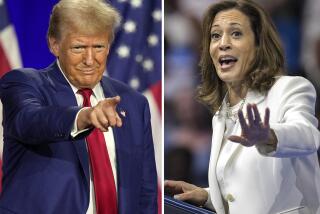Defining some key terms of the healthcare debate
WASHINGTON — Members of Congress have been trying to pass healthcare legislation for years, perhaps leading to the assumption that people know what all the political jargon and policy buzzwords refer to. Here are some key terms:
The exchange: A marketplace in which individuals could comparison-shop for insurance plans overseen by the government. Plans offered within the exchange would have to meet basic standards, to be determined by an expert panel (see below). It’s still unclear on which level these exchanges would be offered -- national, regional, statewide, etc.
Single-payer system: Sometimes called “Medicare for all,” a system in which one entity (typically the government) arranges payment for everybody’s medical care. Advocates of a single-payer system say it would simplify paperwork, eliminate administrative costs and more easily achieve universal coverage; opponents call it socialized medicine.
Public option: Also called a government-run plan, this insurance policy would be offered alongside private plans within the exchange. The goal would be to insure more people by offering more choices and by setting reimbursement rates for doctors and hospitals -- which might prompt insurance companies to cut premiums in order to compete, proponents say.
Co-ops: An alternative to the public option, proposed by Sen. Kent Conrad (D-N.D.), chairman of the budget committee. The co-ops (like government-sponsored coverage) would be nonprofits and would compete with private plans within the exchange. But the key distinction is that they would be owned by their members, not by the government.
Universal healthcare: A situation in which everyone has medical insurance. This is difficult to achieve without a single-payer system that includes automatic coverage. In August, President Obama estimated that the various healthcare plans being considered probably would cover about 38 million of the estimated 46 million people without insurance.
Gang of Six: A term unique to the current healthcare debate: three Democrats and three Republicans on the Senate Finance Committee, reportedly working to produce a bipartisan bill by Sept. 15. They are: Sens. Conrad, Jeff Bingaman (D-N.M.), Max Baucus (D-Mont.), Charles E. Grassley (R-Iowa), Olympia J. Snowe (R-Maine) and Michael B. Enzi (R-Wyo.).
Underinsured: Those who have an insurance plan that provides poor coverage. Some researchers define it as spending more than 10% of income on out-of-pocket medical costs (excluding premiums). By some estimates, more than 60% of personal bankruptcies in the U.S. are linked to medical expenses; in about 75% of those cases, the people filing for bankruptcy had health insurance.
Expert panel: Bills in both the House and Senate would establish an expert panel from various health and medical disciplines to determine which benefits meet minimum requirements for inclusion in the insurance exchange.
Medicare: A taxpayer-supported government insurance program for people who meet specific medical criteria and/or are 65 or older. It was signed into law in 1965 and now comprises four parts: A, B, C and D. In general, Part A covers hospital services, Part B covers physician services, and Part C, also called Medicare Advantage, allows people to enroll in a private plan, which the government helps reimburse. Part D, the most recent addition, took effect in 2006 and offers a prescription drug benefit.
Medicaid: A taxpayer-supported government health insurance program for the poor that is funded by a combination of federal and state money. Medicaid is administered by the states and was also enacted in 1965. The current healthcare bills seek to expand Medicaid eligibility to cover more people.
CHIP: The Children’s Health Insurance Program, a taxpayer-supported government insurance program for children whose parents aren’t poor enough to qualify for Medicaid. In February, Obama signed a reauthorization of the law that extended eligibility to about 4 million children who otherwise would have been uninsured. The program is set to expire in 2013.
Doughnut hole: Coverage gap in Medicare Part D. Enrollees’ drug costs are partly covered up to a certain amount each year ($2,700 in 2009), after which enrollees must spend a certain amount of their money (about $4,350 in 2009) before catastrophic drug coverage kicks in.
Mandate: A requirement that an individual or business purchase health insurance or risk paying fines or payroll taxes. In House legislation, people who neglect to buy insurance for themselves or for their families would pay a 2.5% tax on their modified adjusted gross income.
Cadillac plans: Typically, plans with overall premiums totaling between $19,000 and $25,000 per year. There has been discussion of taxing these high-end plans. But some argue that the premiums might be high because of preexisting conditions.
--
More to Read
Get the L.A. Times Politics newsletter
Deeply reported insights into legislation, politics and policy from Sacramento, Washington and beyond. In your inbox three times per week.
You may occasionally receive promotional content from the Los Angeles Times.










